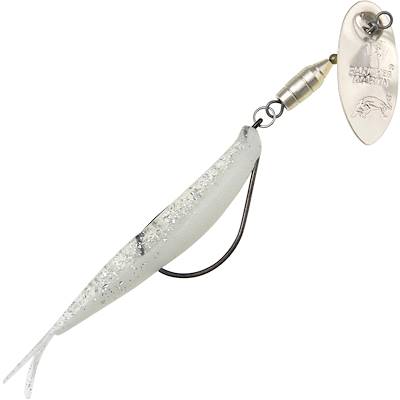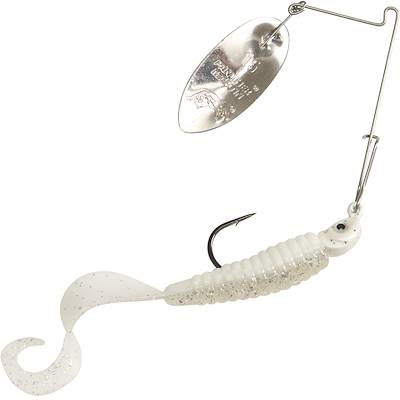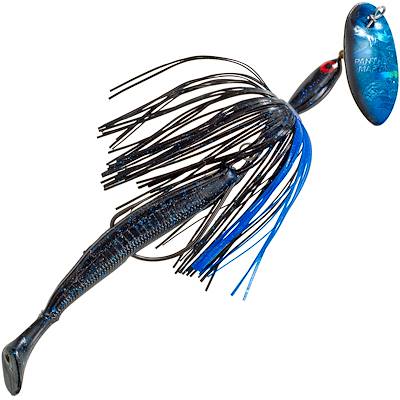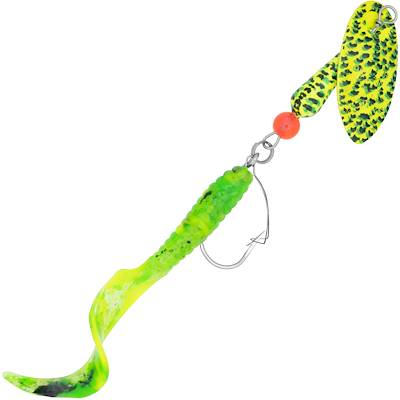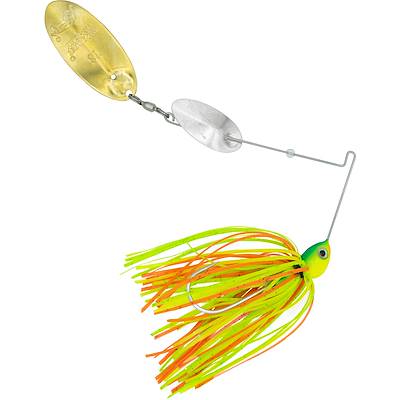Panther Martin Redfish Fishing Guide
Redfish
Introduction
Also known as redfish, channel bass and spot-tail bass, red drum sport a dark red or copper color on the back and flanks, fading to a white belly but are most easily distinguished by a large black eyespot on the upper tail. Found in both Atlantic and Gulf of Mexico, this species is most common south of New Jersey and highly prized as both a food and game fish.
Red drum grow fast – three-year olds typically weight 6 to 8 pounds and mature adults can break the 80-pound mark. Although primarily bottom feeders, they are excellent fighters and quite willing to engage a well-presented lure. Red drum are closely related to the black drum, a species with which they can interbreed to produce a husky but sterile hybrid. Both make a croaking or drumming sound when distressed. Expect to find redfish along channel edges bordering flats in expansive bays, tidal rivers and even in the ocean surf. Smaller redfish often patrol marshy areas and, being able to tolerate freshwater, can push far up rivers and deep into back bay areas.
General Tips
- Redfish in shallow waters can be quite skittish. Approach potential hot spots quietly.
- Since redfish are sensitive to heavy pressure it pays to target them on weekdays when boating traffic is least. Searching off the beaten track is another way to find unpressured reds.
- In addition to baitfish, red drum inhale crabs, shrimp and other crustaceans. Look for them to favor sandy, gravel and slightly muddy bottoms while avoiding areas layered with deep, gooey mud.
- Redfish and sea trout can often be caught on the same trip in shallow bay and river waters. Position your boat parallel to shore to cast in tight for the reds and flip out into more open water for the trout.
- Since redfish favor the most productive areas when feeding on bay flats, look for herons and other stalking birds to give away locations rich in the baitfish and crustaceans these fish love.
- As with striped bass, larger red drum roam the surf just beyond the breakers. The biggest fish will also school in deeper holes and patrol channel edges throughout bays.
- Really big redfish can handle stiff currents and are often found feeding in inlets, harbor mouths and river mouths.
- Redfish are especially fond of shallow flats bordering marshy areas, especially if these areas sport patches of eel grass or similar stringy weed growth.
- Redfish are also commonly found around oyster reefs and breaks in continuity of shorelines such as coves, points, jetties and old pier pilings.
- During cold spells in southern waters, large numbers of red drum will push miles up into warmer tidal rivers and tidal creeks.
Catching Redfish
- When redfish are feeding in clear, shallow water, a quiet approach is best. Tempt these fish with a size 12 or 13 Panther Martin Vivif Swimbait.
- For redfish that are feeding aggressively, a little color does the trick. Try throwing a size 12 or 13 Panther Martin “Big Eye” Vivif Swimbait in holographic green black or holographic pearl black.
- When redfish are feeding on specific baitfish like herring or bunker, choose a matching “Big Eye” Vivif Swimbait in size 12 – 14 such as holographic bunker, holographic herring or holographic mullet.
- With a slender profile and not much of an entry splash, WeedRunners are a solid choice for tempting wary redfish on shallow or grassy flats and alongside bulkheads. Cast ahead of feeding or cruising fish and reel back at a slow to moderate rate to retrieve the lure across your target's path.
- Redfish love shrimp and small baitfish. Match shrimp with WeedRunner Gold New Penny or Silver New Penny patterns. Match baitfish with the WeedRunner Silver Root Beer or Silver White Ice patterns.
- To target redfish in shallow water after dark, toss a “Big Eye” Vivif Swimbait in jet black with red eyes and retrieve slowly. Start with smaller sizes and advance to larger sizes to cull bigger fish.
- When rain and run-off muddy or discolor the water, holographic chartreuse “Big Eye” Vivif Swimbait provides both the color and vibration redfish need to track down your offering.
- Redfish will feed throughout the water column but prefer to hang near the bottom. When using Vivif swimbaits, begin with a slow, steady retrieve and switch to a gentle jigging motion if the fish don’t respond.
- When redfish appear in large schools or crash baitfish against the shore, light them up with quickly retrieved Sonic SizzleTails in Silver Chartreuse Silver Flake, Gold Strawberry, or Silver White Ice patterns.
- Tip a Vivif swimbait with a small, thin pennant of baitfish or add a commercial scent for added redfish attraction.
- When possible, work your Vivif swimbait so that it swims against the current. This increases the action of the paddle tail.
Redfish Facts
- Some redfish sport two or more tail spots. Despite this slight variation from the norm, single spot reds and multiple spot reds are the same species. The “extra” spots sometimes fade away as these fish mature.
- Scientists believe that the a redfish’s distinguishing black spot helps fool predators into attacking the tail instead of their head, allowing them red drum to escape from harm.
- In the summer and fall, adult red drum feed on crabs, shrimp, and sand dollars. In the spring and winter, adults favor a varied diet that includes menhaden, mullet, pinfish, sea robin, lizardfish, spot, Atlantic croaker and various flatfish species.
- Very large redfish are called “bull reds” even though most big redfish are female.
- Red drum weighing up to 15 pounds are very good eating but fillets from larger fish can be course, stringy and relatively unpalatable. Release the trophies to fight again another day.
- Red drum can live to be 60 years old.
- Half of all redfish begin spawning by age 4. Healthy females lay upwards of 1.5 million eggs.
- Redfish tend to spend the first three years of their life in rivers and estuaries, moving out into deeper, more open waters as they mature.
- In shallow water, redfish can often be found “tailing,” like bonefish. Tailing redfish are feeding redfish.
- Catches of red drum are tightly regulated but specific restrictions vary from place to place. Be sure to check the latest rules and regulations for the area you intend to fish before heading out.
Panther Martin Lures & Sizes for: Redfish
These Panther Martin Lure Families and sizes are best suited for catching Redfish


